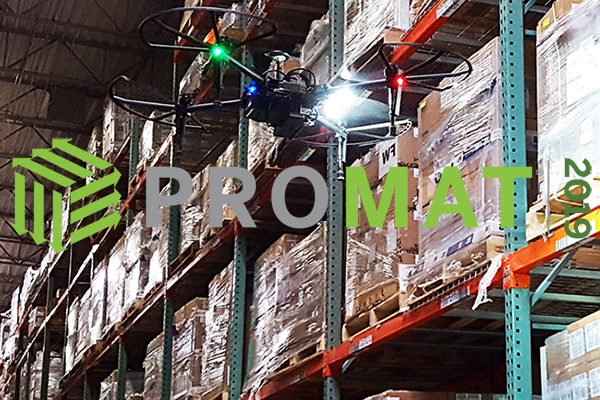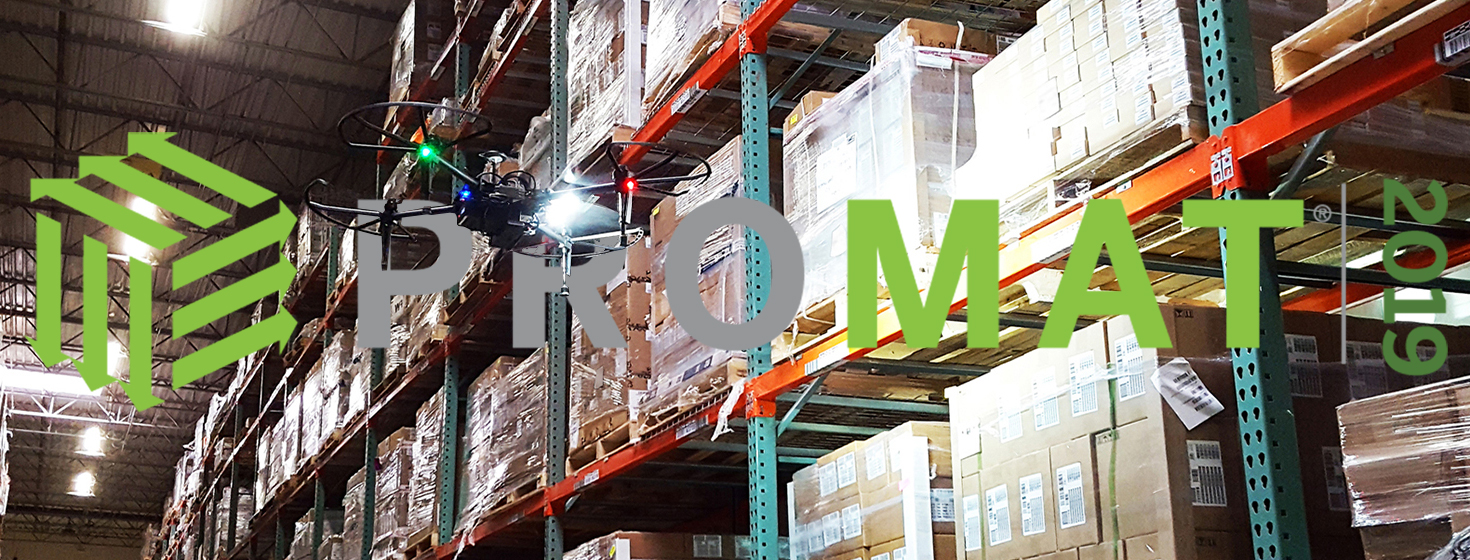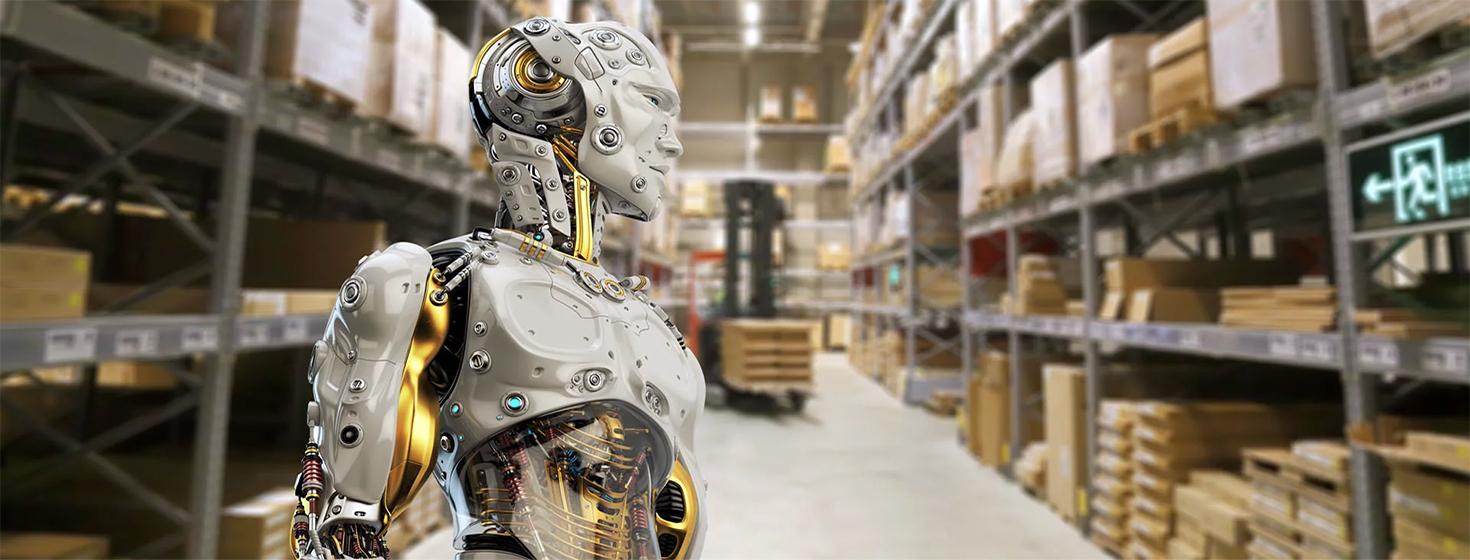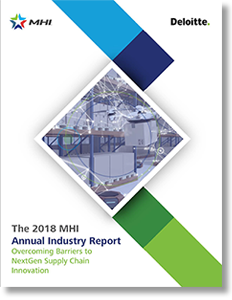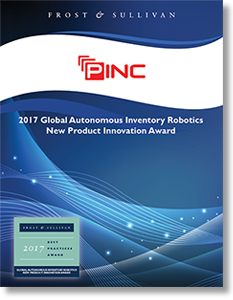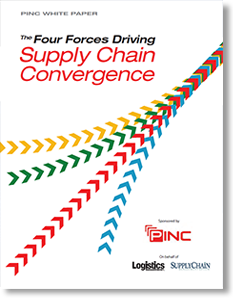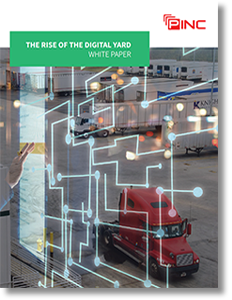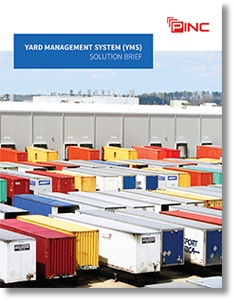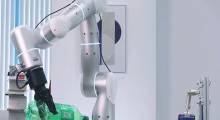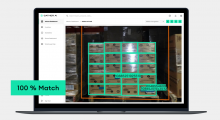Matt Yearling, CEO of PINC at ProMat
Companies delivering products to customers are already dealing with workforce labor shortages and growing demand due to e-commerce, but shrinking warehouse vacancies and an overabundance of stock, due to fears of China tariffs, have created an inventory mess.
At this year’s ProMat 2019 conference in Chicago, Matt Yearling, CEO of PINC, will present “Automating Your Inventory Management With Drones So It’s 100 Times Faster,” at 3 p.m. on Tuesday, April 9, 2019.
The session is part of the CRO Summit at ProMat, produced by RoboBusiness and Robotics Business Review.
The Chief Robotics Officer Summit at ProMat – Full Agenda
PINC is a leading provider of yard management systems, finished vehicles logistics solutions, and inventory robotics.
The company provides hardware, software, and services that aim to help companies move inventory through their supply chain faster, more cost-effectively, and efficiently than manual processes. Founded in 2004, the company has raised more than $33 million in funding.
In an exclusive interview, Yearling shared some details about the session and spoke with us about his thoughts on using aerial drones to speed up inventory management for companies.
Advantages for Aerial Robots
Q: What are some takeaway messages that you hope attendees will get from your “Automating Your Inventory Management With Drones So It’s 100 Times Faster” session?
Yearling: My session will focus on educating the attendees about current inventory management challenges and trends, discuss how autonomous drones and robotics can help them better manage inventory levels, understand if their facilities are a good fit for this type of technology, and what value companies should expect when deploying aerial robots into their operations.
Check-out PINC on Supply Chain 24/7
We’ve seen many companies approaching inventory management through ground robots instead of drones – what are the pros and cons of each approach?
Inventory management is a broad category. Ground robots are certainly a good option for collaborative fulfillment or automated lifting. Aerial robots, on the other hand, can fly over hard-to-reach locations easily, providing a better tool for expediting inventory checks and counts.
The pros are very similar for both solutions, which include a reduction in labor costs, increased operational efficiency, safety, scalability, and flexibility. The main disadvantage is that these technologies might not be a good fit for all kinds or sizes of operations.
Questions to Ask in Evaluating Aerial Robot Systems
When evaluating whether to choose a ground system or an aerial system for inventory, what questions should a company ask?
Just to clarify, the drones that we work with are also robots. They are aerial robots. They fly by themselves, scan inventory by themselves, avoid obstacles, and process and share information without the need of any human interaction. These devices are complex robots that are very simple to use.
The first question companies should ask is “What am I trying to achieve?” Define the business case and what metrics you are trying to improve. The second question is “What technologies are available today for my kind of operation?”
If your goal is to expedite picking and move inventory faster in a warehouse to improve on-time delivery, then collaborative autonomous mobile robotics, or ground robots, might be the right option for you. If you are trying to improve inventory accuracy and speed of inventory checks to improve the visibility of stock in shelves, then aerial robots are the solution you are looking for. The two solutions I just mentioned are complementary.
The third question is “Do I have the right team in place to deploy these technologies?” Establish subject matter experts within your organization that can own and drive these projects forward.
When flying a drone outdoors for inventory management purposes, what regulations do companies need to be made aware of (pilot training, the height of the flight, other waivers and certifications needed), could these requirements turn off potential customers?
Drone regulations are evolving. It’s a complex subject and it needs to be analyzed carefully. Basically, a commercial drone, autonomous or not, to operate outdoors must be flown by someone with a remote pilot certificate (FAA Part 107 certification), the drone needs to be within the pilot’s line of sight, the device cannot fly over 400 feet and cannot operate over people or crowds. Depending on the airspace which the facility is in, it also might be prohibitive.
To answer your question, I don’t think these would turn off customers. Most potential customers aren’t aware of these rules. The ones that are familiar with them understand the value that the drones and aerial robotics solutions can bring to their day-to-day operations, and usually explore the feasibility of these projects.
Robotic Technology Challenges for Companies
Are most customers that you work within the process of switching from a manual process to something more automated, or do you think they’ve evaluated ground robots and they need something that’s more versatile (such as high shelving, etc.)?
Since we are at the beginning of this movement, the solutions available will attack the most important challenges. Not every operation will benefit from robotics technology in the short term. However, if you don’t have an initiative at least to evaluate these technologies, you are already behind your competitors.
According to MHI and Deloitte, there are two primary well-known forces driving investments in technology in the supply chain and logistics industry: Customer demands and workforce shortage. More recent challenges, such as the national warehouse vacancy rate hovering at record lows, and warehouses bloated with inventory pulled in from China during 2018 to get ahead of impending tariffs, have created an even more demanding environment.
Also, in polling supply chain executives from across numerous industries, we found that two-thirds of logistics spending is allocated to transportation and the remainder to warehousing. This is likely why so many companies are focused on innovations like self-driving vehicles. We also found that, interestingly enough, transportation only moves 10% of the average firm’s inventory, while 90% sits on shelves or trailers at manufacturing plants, distribution centers, or out in a store.
That tells us that companies are still carrying too much inventory and that they’re not necessarily doing a good job of managing inventory levels. These companies are also struggling with out-of-stocks, poor accuracy, inventory shrinkage, and other problems associated with ineffective inventory management.
We are living in interesting times. It’s a new business environment that requires velocity, accuracy, and flexibility. Autonomous robots are improving the speed and accuracy of routine operations, particularly in warehousing and manufacturing spaces; working side-by-side with humans for added efficiency, and reducing the risk of employee injury in dangerous environments.
What other questions do customers in the warehouse/supply chain space have for you when they’re talking with you about inventory management?
I think accuracy and speed are top of mind. They want to replace their manual and slow process with something that is 100 times faster and close to 100% accurate, which our aerial robot is.
About the Author
Keith Shaw is the Editor-in-chief for Robotics Business Review. Prior to joining EH Media, he worked as an editor for Network World, Computerworld, and various newspapers across Massachusetts, New York, and Florida. He holds a degree in journalism from Syracuse University.
This year at ProMat (April 8-11 in Chicago) we are joining forces with other Robotics market leaders, including 6 River Systems, Right Hand Robotics, Magazino, Tompkins Robotics, IAM Robotics, on what we call the Passport to the Future: Robotics in the Supply Chain.
This is a fun way to enhance your learning experience in the latest robotics technologies. Drop by any of the participating booths to pick up your passport and get enrolled for a chance to win one of the many prizes.
Hope you are looking forward to the event as much as I am. Please say hello at our booth (#S4279) or during one of our educational sessions.
See you at ProMat 2019 Chicago.

CEO, PINC
www.pinc.com
Related Article: Supply Chain Robotics Leaders Join Forces at ProMat 2019
Related Resources
2018 MHI Annual Industry Report - Overcoming Barriers to NextGen Supply Chain Innovation
This year’s report features in-depth profiles of the five NextGen innovations having the greatest impact on supply chains; Robotics and Automation, Predictive Analytics, Internet of Things Sensors, Artificial Intelligence, Driverless Vehicles, and Drones. Download Now!
Using Autonomous Robots to Drive Supply Chain Innovation
This paper details how new technologies are presenting promising opportunities for improvement across the supply chain and how autonomous robots and drones are poised to change the game. Download Now!
Global Autonomous Inventory Robotics New Product Innovation Award
This best practices research paper details the PINC Air inventory robotics solution with its quick deployment model, faster inventory velocity, product ingenuity, and rapid ROI underscoring the decision for PINC to win Frost & Sullivan’s 2017 New Product Innovation Award. Download Now!
The Four Forces Driving Supply Chain Innovation
When supply chain professionals discuss supply chain execution, their focus is typically put on transportation management systems and warehouse management systems, the yard management systems capability and importance is mistakenly undervalued. Download Now!
The Rise of the Digital Yard
In this white paper we explore the rise of the digital yard and show how technology is enabling significant efficiencies, productivity gains, and cost containment in a world where every penny added to the bottom line positively impacts organizational success. Download Now!
Solution Brief: Yard Management System
Yards are the intersection between warehouses and transportation, they are a critical linkage in logistics management practices and have a significant impact on the overall efficiency of the supply chain. Download Now!
More PINC Resources
Article topics
Email Sign Up

